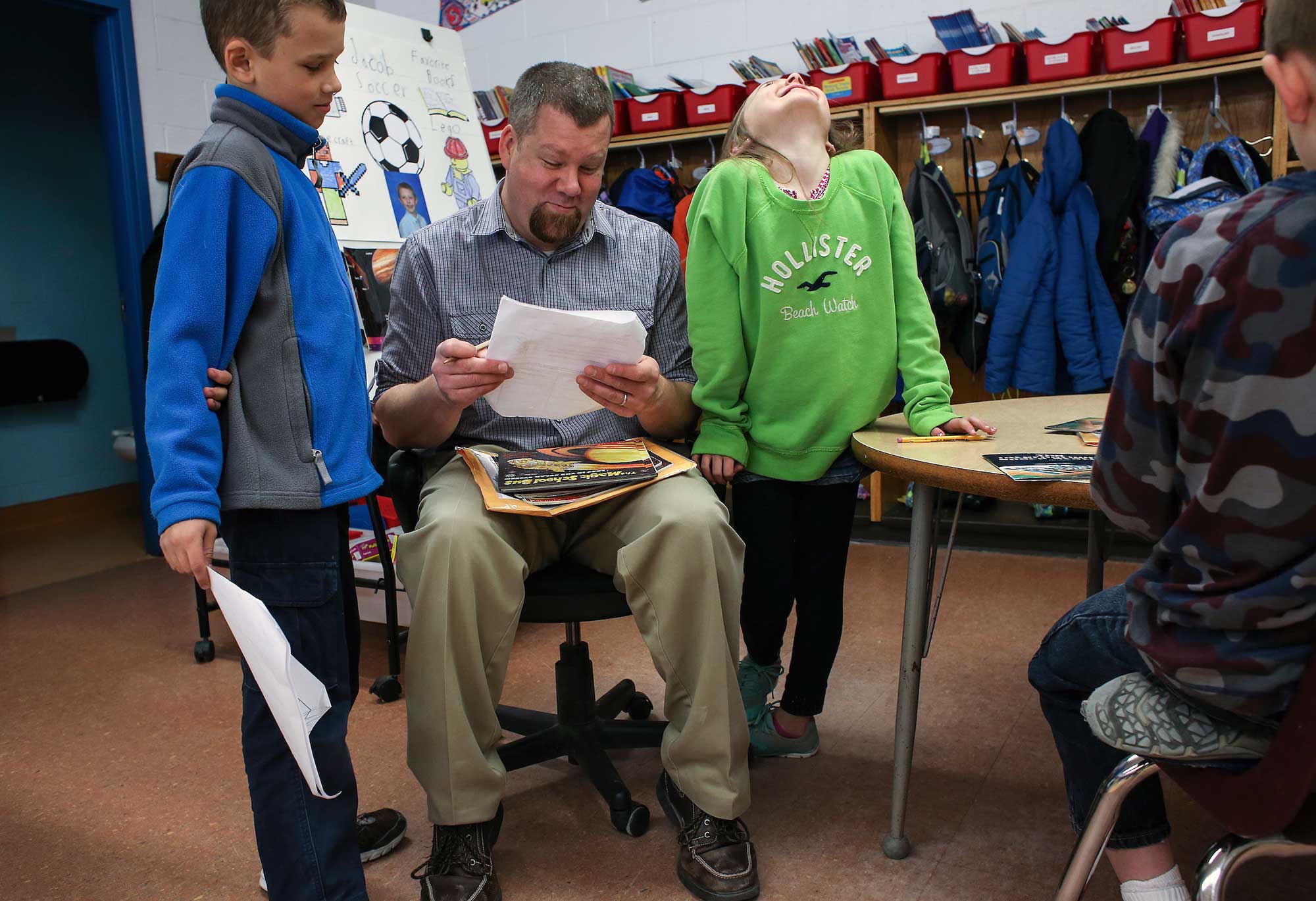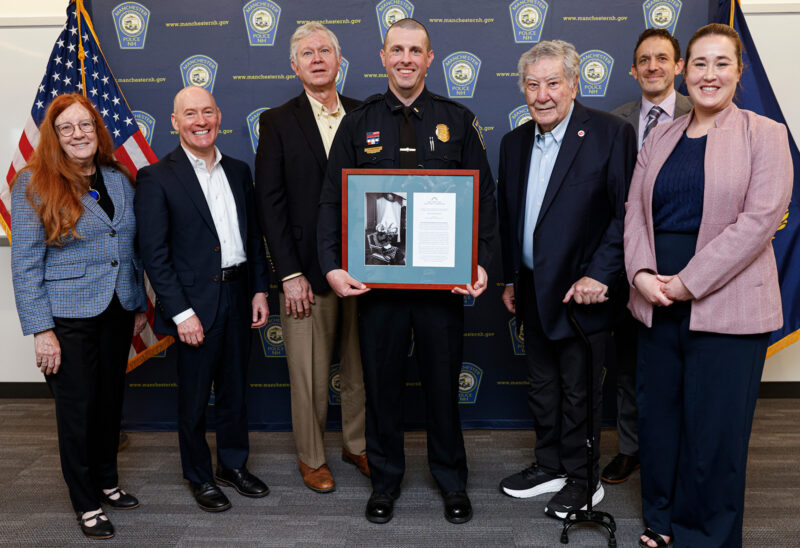“Imagine visiting the rocky shore off the coast of New Hampshire during low tide…and then mysteriously shrinking to a tiny height of two inches!”
When posing fantastical situations like this one to a classroom full of third-graders, the creative and analytical juices start to flow with incredible force. Imaginative scenarios can excite and engage students, creating a thirst for knowledge and sparking innovative ideas.
I had the privilege of visiting classrooms around the state thanks to the Christa McAuliffe Sabbatical Program at the New Hampshire Charitable Foundation. I was creating a new, and free, curriculum for elementary school science teachers, and classroom visits helped me test-run it.
I presented the storyline above (referencing Ms. Frizzle of “Magic School Bus” fame), and then I posed the following question: “What dangers would you face?” The answers that followed either reinforced prior knowledge about the rocky shore, or led to an understanding of the type of chaotic environment rocky shore organisms face every day.
Classroom visits allowed me to see the rocky shore curriculum I was creating in action. They also enabled me to see the areas in which some of my lessons needed revisions. These fun and productive school visits, plus meetings with marine experts, and valuable time to write a curriculum for elementary educators would not have been possible for me if it weren’t for the existence of the Christa McAuliffe Sabbatical.
I was ecstatic when I discovered I had received the 2016 Christa McAuliffe Sabbatical. The application process is rigorous and thorough. The sabbatical recipient gains a fully-paid, one year leave of absence, with a budget for materials for their project. The objective of the sabbatical experience is to provide an educator with an entire year to pursue an educational project that can benefit the entire state.
The project I proposed was threefold: 1) speak to educators around the state about the importance of taking action to improve elementary science education in our state, 2) help student teachers in colleges and universities be better prepared to teach elementary science, and 3) create a marine science ecosystem curriculum for the elementary classroom.
This sabbatical enabled me to meet with teachers in school districts around the state to discuss the need for more effective science instruction at the elementary level, as well as the need for more time to be designated specifically for science instruction in elementary schools. I conducted workshops on teacher preparedness and effective science pedagogy for student teachers at Plymouth State University and Franklin Pierce University. And I created a free and quality marine science curriculum for elementary teachers around New Hampshire and New England to implement in their classrooms.
The Rocky Shore Marine Science Curriculum: An Ecosystem Unit for Elementary Educators is a user-friendly, professional course of study that incorporates the Next Generation Science Standards and the Ocean Literacy Principles, and extensively covers the multitude of characteristics of the rocky shore, particularly the Atlantic rocky shore. It provides educators and students with a variety of educational, cross-curricular lessons that can be completed in sequence or individually. It is available for free download from my website, engageyourstudents.org, and also from the Seacoast Science Center. Hard copies will soon be accessible at the Seacoast Science Center and the New England Aquarium’s Teacher Resource Center.

Science and elementary school teachers throughout New Hampshire educate their students on ecosystems, the unique interactions between organisms and their physical environments, as well as the importance of maintaining the health of these ecosystems. Our state has an invaluable ecosystem where our land meets the Atlantic Ocean coastline: the rocky shore. Because our state’s innovative educators are constantly looking for new ways to enhance their science instruction while integrating current educational standards into their classrooms, I felt that creating an in-depth curriculum for our educators would be valuable and appreciated.
The curriculum was developed with the strong and much appreciated collaborative efforts of many talented individuals from the Seacoast Science Center, the University of New Hampshire Cooperative Extension/NH Sea Grant, the New England Aquarium, Hobblebush Design, talented illustrator Adam Kelley, and of course, the New Hampshire Charitable Foundation.
During my test-drives of the curriculum, I would share the fabulous read-aloud book, “Between the Tides” by Fran Hodgkins, which sparked great curiosity among the students. And then we would embark on one of my favorite activities for elementary students (Lesson 7 of the curriculum). Students are asked to use their prior knowledge and ingenuity to “create a critter” that would be able to survive the rocky shore. This is a life-science-meets-engineering-science lesson that can also double as a formative assessment. Students are provided with just five index cards, scissors and Scotch tape to make their creations.
It is always a wonder to me to see what young minds can come up with on short notice in the create-a-critter challenge. The bright and enthusiastic Andover students came up with a variety of incredible creations including combinations of actual rocky shore animals — and one student had the impressive notion of using the tape as an actual sticking agent to help the critter to hold on tight to the rocks! Everything the students built, in one way or another, reflected their understanding of both the dangers of the rocky shore and the adaptations animals need to survive this harsh environment.
My time in classrooms around the state was extremely enjoyable, and it was thrilling to see the kids engaged in the fun, educational experiences that the rocky shore curriculum is designed to bring to any elementary classroom.
As a child growing up in Maine, and later as a teacher in New Hampshire, I learned a lot about Christa McAuliffe — about her dedication and perseverance, her passion and her humility. The most exhilarating aspect of receiving the sabbatical for me personally was to earn an award that was created to honor her memory and legacy. Elation is how I felt upon receiving the sabbatical. Honored and humbled is how I still feel when considering the opportunity I was given, and how it would not have been possible if not for the exuberance of a teacher who encouraged her students regularly to make a difference. She taught her students to reach for their stars, and now many sabbatical recipients have been able to reach their stars thanks to this program.
Helen Keller once said that ideas without action are useless. Educators around the state have innumerable, brilliant ideas that are unable to be acted upon due to the many formidable challenges they face every day. The Christa McAuliffe Sabbatical has, so far, enabled 32 teachers to act upon their innovative ideas and create projects that have assisted the progression of education in our state. If you know a teacher with a great idea on how to help our state’s students, let them know about this sabbatical. If you are an educator and have a creative idea in your back pocket, don’t let it dissipate — act, by applying for this unbelievable, invaluable experience.

















